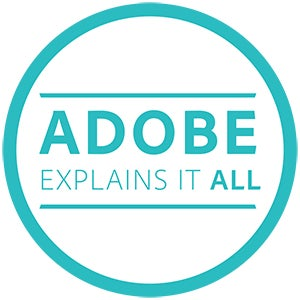Adobe Explains It All: Illustrator

**

http://blogs.adobe.com/conversations/files/2015/03/Anubhav_Rohatgi.jpg
**When it comes to using the right Adobe software for your projects, there are so many options to choose from, spanning After Effects to EchoSign, Acrobat to Muse. There’s Test and Target, Analytics, and Campaign, too. The solution that’s right for you will, of course, depend on what you’re looking to achieve, so we’ve created this new series to help explain some of our key offerings.
For this installment, we reached out to Adobe Group Product Manager Anubhav Rohatgi to talk about Adobe Illustrator, the premium software application for artists and designers looking to create and modify scalable vector graphics.
Anubhav, when was Adobe Illustrator first created?
The first version of Illustrator, which was conceived of by Adobe cofounder John Warnock, appeared about 28 years ago, in late 1986. The first version available to the general public was released on March 19, 1987.
Who is it for?
Illustrator is used by artists and graphic designers who create logos, icons, charts, infographics, posters, ads, books, magazines, and brochures. Even comic book illustrators use it. It’s the industry-standard software application for anyone, anywhere, who wants to work with vector graphics. If you look at the Adobe logo, for instance, it needs to look as nice and sharp on a business card as it does on a three-story billboard. To create graphics that can scale in size and still look sharp, without any pixilation, you need to use vector graphics, which use mathematical equations to preserve the shapes of images at any size or scale. Unless you use vector graphics, images are not going to scale well or the files are going to be too big in size.
Where is Illustrator used the most?
Actually, just about every industry uses Illustrator, from two-dimensional CAD designs in engineering fields to the greeting cards made by Hallmark. People designing watches use Illustrator, and people designing shoes use it too. It’s the standard tool for apparel design, including T-shirts, and almost all packaging design work is done in Illustrator—such as, say, the label for a wine bottle, or the packaging of your favorite orange juice. Look at the icons for apps on your mobile phone or tablet: they’re almost all done in Illustrator. Surface designers create patterns in Illustrator, which can then be put on carpets, tiles, or textiles. I have to mention the Japanese, too. They were early adopters and really love Illustrator, creating calligraphy and other beautiful print work with it.
What are some of the other products in the Illustrator family?
We currently have Illustrator Line and Illustrator Draw. These two iPad applications are part of the Illustrator family, and the vision behind these apps is to allow people to work on mobile devices and then bring their work to the desktop and carry on with it there. Illustrator Line is for perspective drawing and especially good for drafting or architecture, since it lets you visualize a building or any design in perspective. And Illustrator Draw is simply an excellent tool for drawing, coloring, and illustration. They’re both used by artists to create all kinds of beautiful work. I’m always surprised and amazed by what people are able to do with our tools, and I think the constraints of certain applications seem to force them to be even more creative.
Why do designers choose to use Illustrator over other Adobe design programs like Photoshop?
Using vector graphics gives you much more flexibility than using raster images in your design process, since it’s easy to go back and change any individual curve or line or color without having to start from scratch. So if that appeals to you as a designer, Illustrator’s the tool for you. More often than not, though, Illustrator and Photoshop are used together because each product is best at what it does, and they complement each other well. Illustrator is the best vector-editing software, and Photoshop the best image-editing software, on the market.
Finally, how would the world be different if Illustrator had never existed?
It is really hard to imagine, like trying to imagine a world devoid of art. Illustrator makes it possible for me to realize my vision. Even though I may not have the most dexterity when it comes to creating art or design, it’s Illustrator that makes it possible for a less dexterous person, as well as really talented one, to both realize their potential with digital tools. Their vector-based artwork can then be transformed into all formats and disseminated at literally any size with no loss in quality—to be seen on the side of a building, on an IMAX screen, in a magazine, or on an iPhone. Illustrator is one of those things that brings joy to our lives, giving us amazingly beautiful artwork, but it also makes everyday signs and designs enjoyable too.